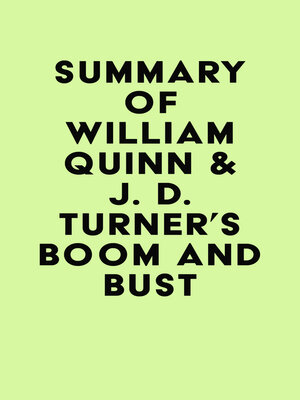
Sign up to save your library
With an OverDrive account, you can save your favorite libraries for at-a-glance information about availability. Find out more about OverDrive accounts.
Find this title in Libby, the library reading app by OverDrive.



Search for a digital library with this title
Title found at these libraries:
| Loading... |
Please note: This is a companion version & not the original book. Book Preview:
#1 The difference between the great classical musician George Frideric Handel and the pop singer Shane Filan is that Handel was able to make a handsome profit when he sold his shares in the South Sea Company before the end of June 1719. Filan, on the other hand, was bankrupted when the housing bubble collapsed.
#2 There are three ways in which bubbles can be useful. They may facilitate innovation and encourage more people to become entrepreneurs, which ultimately feeds into future economic growth. They may provide capital for technological projects that would not be financed in a fully efficient financial market.
#3 The word bubble is used today by commentators and news media to describe any instance in which the price of an asset appears to be slightly too high. However, this definition is controversial among academic economists, who view a bubble as a non-explanation of a financial phenomenon.
#4 The first side of our bubble triangle is marketability, or the ease with which an asset can be freely bought and sold. This is often affected by the legality of an asset, its divisibility, and how easily it can be bought and sold.






